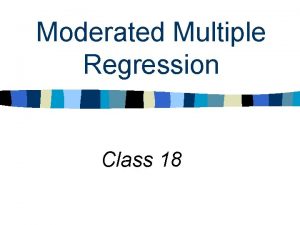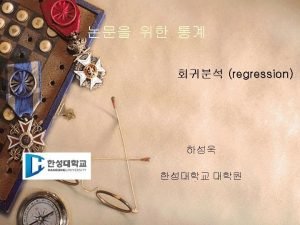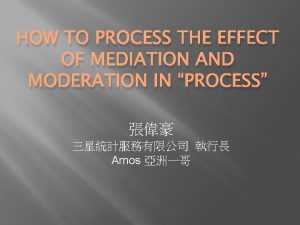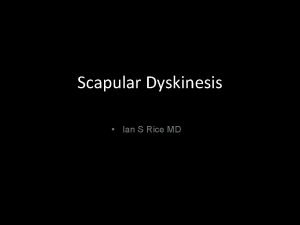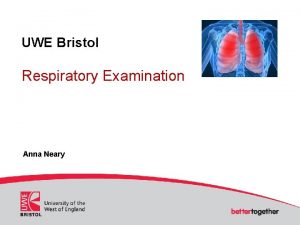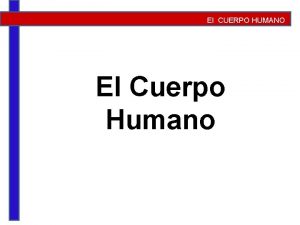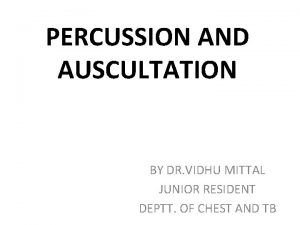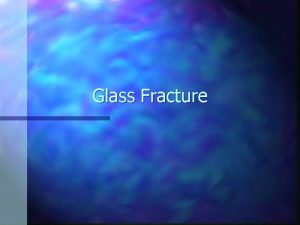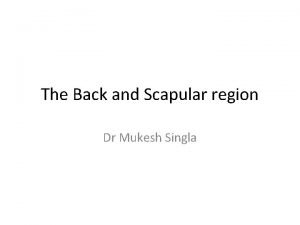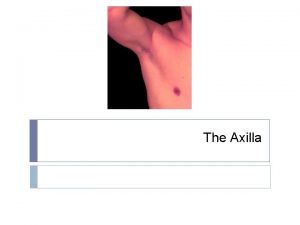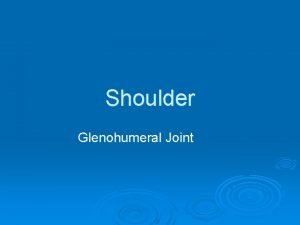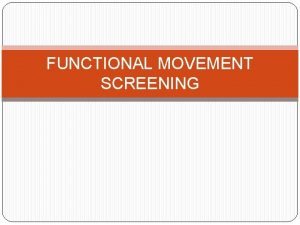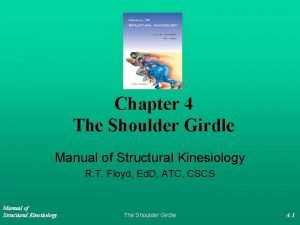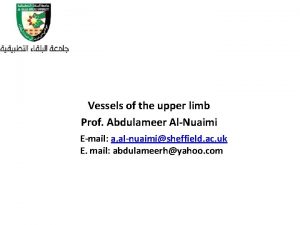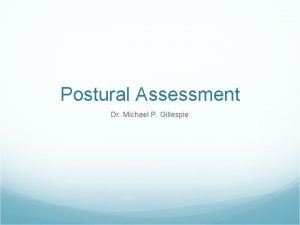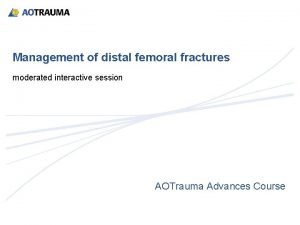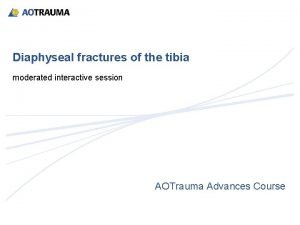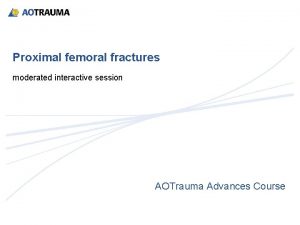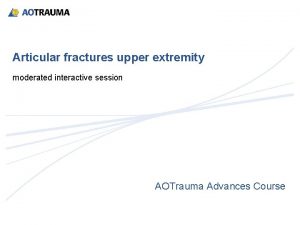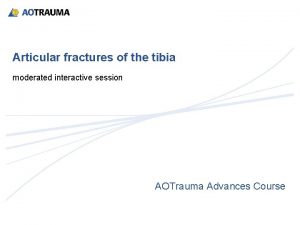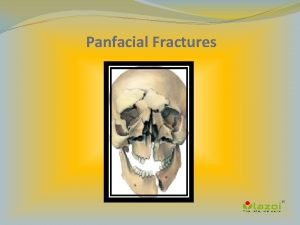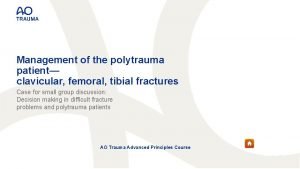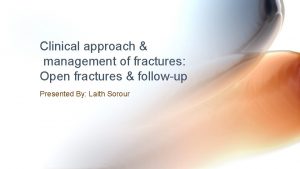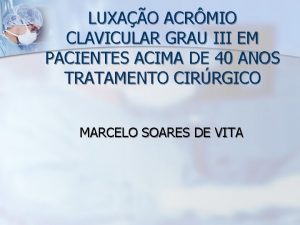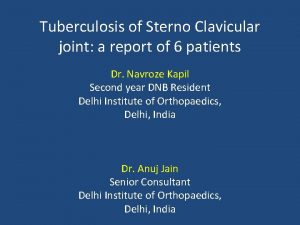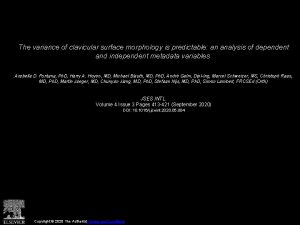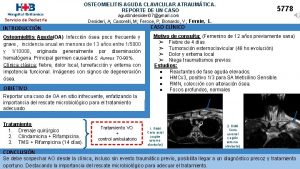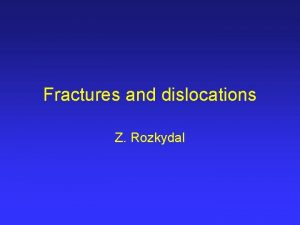Management of clavicular and scapular fractures moderated interactive





















- Slides: 21

Management of clavicular and scapular fractures moderated interactive session AOTrauma Advances Course

Learning outcomes • Identify the appropriate treatment options for clavicular and scapular fractures • Determine key factors in outcome

Fracture surgery for the clavicle has been uncommon in the past. Is this part of your practice now? 1. Never 2. Rarely 3. Occasionally 4. Always

Would you operate on this clavicular fracture? 1. No 2. Yes

Would you operate on this clavicular fracture? 1. No 2. Yes

Is surgical treatment of scapular fractures part of your practice? 1. Never 2. Rarely 3. Occasionally 4. Always

Key points from lectures Clavicular fractures • Strong evidence (RCT) for surgical treatment of displaced midshaft clavicular fractures • Nonoperative treatment is still standard for undisplaced or minimally displaced fractures Scapular fractures • High-energy injuries have frequent associated injuries • Surgical treatment in indicated glenoid injuries with 5 mm displacement and any subluxation • Nonoperative treatment in indicated body injuries unless marked displacement and unstable neck

30 -year-old male, fall while skiing • Displaced right clavicular fracture • Right-handed resident in internal medicine

What kind of treatment do you offer? 1. Nonoperative treatment 2. Operative treatment

Intraoperative x-ray

Reinjury of right shoulder Patient lifted son weighing 25 kg 2 weeks postoperatively, new bump

What would you do now? 1. 2. 3. 4. Nothing, but warn him about future activity Reoperate now Repeat ORIF with autogenous bone graft Other

Patient returned after 2 weeks with increased pain

Now what? 1. Nothing, but warn him about future activity 2. Reoperate now 3. Repeat ORIF with autogenous bone graft 4. Other

Revision surgery—special precautions? 1. No, just a sling 2. Yes, for 4 weeks 3. Yes, for 3 months What about smoking? What about activity level?

Would you operate on this scapular fracture? anterior glenoid 20% of joint surface 1. No 2. Yes 3. Maybe

40 -year-old male, fall from a ladder • Right-handed, accountant • Isolated right scapular fracture • Displaced right clavicular fracture

Would you operate? 1. No 2. Yes from the front 3. Yes from the back


Better or worse ROM in the long term in case of nonoperative treatment? 1. Better 2. Worse 3. About equal

Summary • Indications for operative treatment of the clavicle and scapula have evolved over time • There still are indications for nonoperative care for fractures of both bones • Approaches for this surgery are difficult, especially scapula • Problems with too much activity/inactivity in patients
 Mediator vs moderator
Mediator vs moderator Moderated multiple regression
Moderated multiple regression Moderated multiple regression
Moderated multiple regression Parallel mediation model
Parallel mediation model The jugular notch is located
The jugular notch is located Scapula retraction
Scapula retraction Parts of axillary artery
Parts of axillary artery What is tactile fremitus
What is tactile fremitus Linea medio clavicular
Linea medio clavicular Lineas cuerpo humano
Lineas cuerpo humano Clavicle percussion
Clavicle percussion Concentric fracture definition
Concentric fracture definition Fracture patterns in glass
Fracture patterns in glass Scapula mobility
Scapula mobility Scapular anastomosis
Scapular anastomosis Shoulder outlet view positioning
Shoulder outlet view positioning Scapular plane
Scapular plane Scapular reflex
Scapular reflex Scapula bony landmarks
Scapula bony landmarks Arteries in upper arm
Arteries in upper arm A. profunda brachii
A. profunda brachii Upper cross syndrome
Upper cross syndrome

